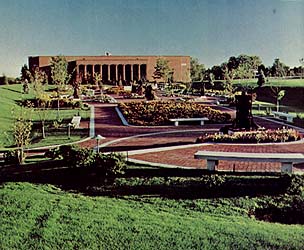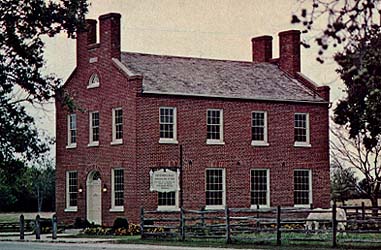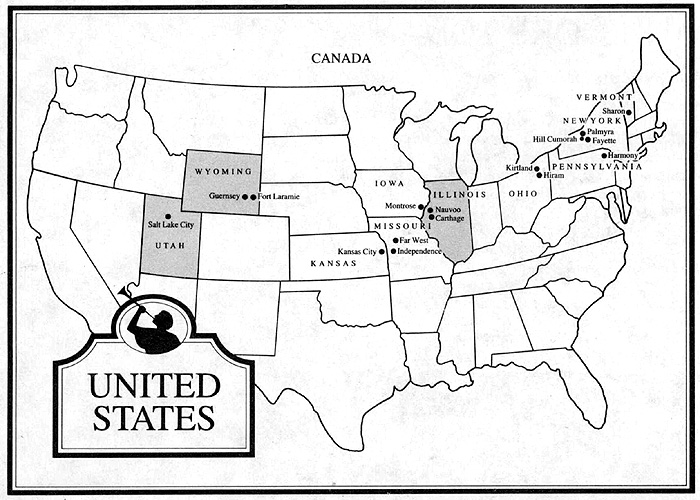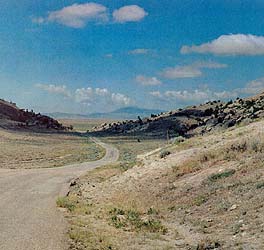“The Way It Looks Today,” Tambuli, June–July 1985, 35
The Way It Looks Today
A Camera Tour of Church History Sites in Illinois and on the Trail West
In the third and final part of this photographic essay on Church-related historical sites, we look at samples of the fine Nauvoo, Illinois, dwellings and buildings—many of which have been restored—that the persecuted Saints left behind as they set out across the seemingly endless plains to seek refuge in the valley of the Great Salt Lake. Photographs are by Eldon Linschoten and Jed Clark.

The Nauvoo Illinois visitor’s center with the garden of statues honoring the Relief Society, dedicated in the summer of 1978. President Ezra Taft Benson of the Quorum of the Twelve created the thousandth stake in the Church at Nauvoo on 18 February 1979.

The Jonathan Browning house and workshop, Nauvoo. Browning invented one of the earliest repeating rifles, his son, John Moses Browning, who settled in Ogden, Utah, invented the automatic machine gun.

First floor of Carthage Jail where the prisoners spent their first night.

Reconstructed Seventies Hall, Nauvoo. Built between 1843 and 1844, it was used for lectures, classes, and worship services.

Carthage Jail where Joseph and Hyrum Smith were killed on 27 June 1844.

Front view of Wilford Woodruff’s Nauvoo home.

United States

Smith family cemetery with stones marking the original sites of Joseph and Emma Smith’s graves. Also interred here were the Prophet’s parents, Lucy Mack Smith and Joseph, Sr.; his brothers Hyrum, Don Carlos, and Samuel; two of his infant sons; and some family friends.

Looking west down Mexican Hill on the Platte River near Guernsey, Wyoming. The trail through the rock was so steep the pioneers claimed that if a cup fell out of the wagon on the way down, it would land in front of the oxen.

Five miles west of Fort Laramie, Wyoming, the 10,000 foot high Laramie Peak marked the beginning of the western mountains.

Heber Springs near Horse Shoe Creek west of Glendo, Wyoming. Its lush green meadows were a favorite camping ground for the Saints. The springs were named after Heber C. Kimball, a superb horseman and frequently a scout, who was the first Latter-day Saint to come upon them.

Walking up Deer Creek, near Glenrock, Wyoming, in September 1847, Brigham Young, Heber C. Kimball, and a few others returning from the Salt Lake Valley to Winter Quarters, flushed a mother grizzly bear and escaped her charge only by clambering up these rocky cliffs.

Emigrant Gap looking west. One of several “Emigrant Gaps” along the western trail, this one is near Devil’s Gate, Wyoming. Every westering Latter-day Saint passed through it.

Independence Rock, looking west. At this famous camping site in Wyoming, Latter-day Saint children climbed the rock’s sides and many adults carved or painted their initials on it.

The Salt Lake Valley as it looks today with a growing Salt Lake City nestled between the mountains.